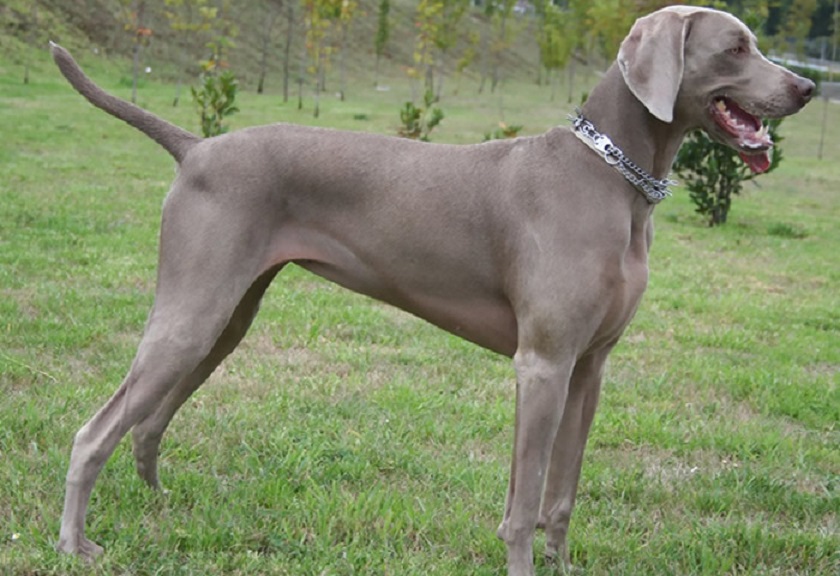
Weimaraner

Navigate through the tabs
Navigate through the tabs below to view the breed's info of your interest.
The breed's info is divided in four sections; namely:
the breed's history ,
the breed's main stats ,
the dog's potential health issues
and finally, how the breed scored in 26 different categories.
All the above information should give you a respectively good overview for the dog of your interest.
Dog Breed's Main Info
The Breed's History:
Today's breed standards are alleged to have developed in the late 18th and early 19th centuries, although dogs having very similar features to the Weimaraner have supposedly been traced as far back as 13th century in the court of Louis IX of France.
One theory is that the ancestor is the St. Hubert Hound (also known as the Bloodhound and Sleuth Hound).
Though these dogs are black, they can produce a grey dog when bred. Like the Vizsla at the time, the breed was created exclusively for the nobility. The aim was to create a noble-looking, reliable gun dog. With its restricted ownership and natural instinct, the breed was highly prized and lived with the family.
This was unusual since during this period hunting dogs were kept in kennels in packs.
This has resulted in a dog that needs to be near humans and that quickly deteriorates when kenneled. The Weimaraner was an all-purpose family dog, capable of guarding the home, hunting with the family, and of course, being loving and loyal towards children.
Originally, Germany was possessive of its skilled all-purpose gun dog. Some of the earliest Weimaraners, prior to being sent to America for breeding, were sterilized in order for America not to popularize their special breed.
But starting in the late 19th century the breed became increasingly common throughout Europe and the United States.
Although slower than many other gun dogs, such as pointers, the Weimaraner is thorough, which made it a welcome addition to the sportsman's household. The breed's happy, lively temperament has endeared it to families. With the rise in popularity, some changes have been made to the breed.
Both in Britain and America (where the breed remains popular) breeders have taken care to breed to a standard.
Country of Origin:
Germany
Breed Group:
Sporting
Height:
1 foot, 11 inch. to 2 feet, 3 inch. (58,42 to 68,58 cm)
Weight:
55 pounds to 85 pounds (24,94 to 38,56 Kg)
Life Span:
11 to 13 years
Potential Health Issues:
Von Willebrand's Disease,
Hip Dysplasia,
Gastric Dilatation-Volvulus (GDV) aka Bloat or Torsion,
Progressive Retinal Atrophy (PRA),
Distichiasis,
Hypothyroidism,
Entropion,
Factor XI Deficiency,
Immune-Mediated Disease
Adaptability
Apartment Living:
First Time Owners:
Sensitivity:
Being Alone:
Cold Weather:
Hot Weather:
Friendliness
Affection With Family:
With Kids:
With Dogs:
With Strangers:
Health and Grooming
Shedding:
Drooling:
Easy To Groom:
Overall Health:
Weight Gain Potential:
Size:
Training
Easiness:
Intelligence:
Mouthiness:
Prey Drive:
Barking or Howling:
Wanderlust:
Need For Exercise
Energy Level:
Intensity:
Exercise Needs:
Playfulness:
Our Mobile Application
Check out Our Mobile Application "Dog Breeds Central"
